“Here’s to a hobby that takes us outside and the understanding wives who put up with it.” -Eric Valdez
I have seen many styles of HDR, many styles that do not work and many styles that are over the top. Eric Valdez brings a new light to the High Dynamic Range world. He has such an incredibly acute style of processing, it is crisp, clean, and free of the normal HDR saturation toxin currently defiling the web. Eric and I have discussed HDR thoroughly over several dinners with the wives and during a couple photo safaris. Eric is true to the nature of HDR using it as a vehicle to capture exactly what he saw when he was on the scene. This is truly applaud worthy, I know how difficult it is to stay true to the scene when you have the power to push it further to the point of an artistic rendition rather than the scene as you saw it. Eric blew me away with his post processed HDR photos from our Golden Gate endeavor and here he is to discuss his gear and process:
What gear do you shoot with, do you find any one piece most helpful for the HDR process?
I have yet to make a cent off of my very expensive hobby but my wife is extremely supportive and doesn’t mind if I splurge a little on gear. Being in the military for over ten years I’ve become a bit of a “gear-o-phile”, so I’ve always got my eye on something new. My camera kit is no different. Currently I’m using a Maxpedition “Colossus Versipack” as my main walking bag. It doesn’t scream camera and can be modified with numerous additional pouches. Is it the perfect solution? No. But like everything else in photography, it’ll do for now. My recent acquisition of the Canon 7D has truly taken my photography to the next level. The high speed burst mode combined with low noise at higher ISO’s mean I can hand hold for HDR in almost any scenario.
Hardware:
- Canon EOS 7D
- Canon 24-105L f/4
- Canon 100 f/2.8 Macro
- Canon 50 f/1.8
Support:
- Manfrotto 190XPROB with Giottos MH-1300-657 Ballhead
Software:
- Adobe Lightroom 3
- HDRSoft Photomatix
- Adobe Photoshop CS3
Was there any initial image or artist that inspired you to start shooting in HDR?
Almost four years ago I read an article in Outdoor Photographer that seemed to bash HDR as an obnoxious fad. This was the first time I’d ever heard of High Dynamic Range photography and I initially dismissed it since I wanted to become a classic landscape shooter like Galen Rowell or Ansel Adams. As time went on, I was continually disappointed by the quality of the shots I was getting with my Canon Rebel XTi. I googled “HDR” and downloaded a free trial of photomatix 1 after becoming enticed with the example images. However, not knowing what I was doing I quickly lost interest. Fast forward three years and I was turned on to EverydayHDR. Finally some real education presented in an approachable fashion. As I learn, I become more and more infatuated with the results.
Your style of HDR processing has come pretty far in the last couple months as I have been stalking your Flickr Photostream. The last several images have been particularly awesome. You have an extremely clean HDR processing style, what do you do to get such natural looking HDR images? Do you find it hard to resist the urge to go over the edge with the processing as most do with the HDR process?
I’m still trying to achieve results that are as true to the way I saw a scene as possible. I want to showcase the beauty of nature and the light that was available at that moment. When my wife looks over my shoulder at my laptop and says: “Oh, that’s HDR?”, I go back and tone it down. She’s a good gauge. I usually keep the strength at 100 and set the smoothing to High. Sometimes Mid if the scene is really contrasty.
I do almost all my post processing in Lightroom 3. It’s intuitive and the noise reduction is amazing. Being able to mask while sharpening is a real time saver. I used to use a Gausian Blur on noisy clouds in Photoshop, then mask out the rest. With Lightroom I don’t have to waste time painting in detail.
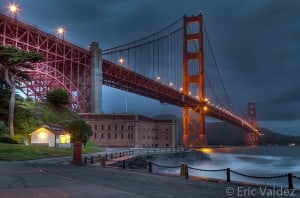 This HDR capture is incredible, from the composition to the post processing, can you give us some insight as to how you came to such an end product?
This HDR capture is incredible, from the composition to the post processing, can you give us some insight as to how you came to such an end product?
As thousands have said before me, it’s all about timing. As my shooting partner that day you know we didn’t just set our clocks to one specific time, wait, press the cable release and walk away. We found an interesting spot and “paced”, walking all around looking for the best perspective of the scene. In earlier shots, the sky and foreground were very dark which made the bridge stand out but I lost that misty effect of the water. As dawn rapidly approached, the clouds gained a little definition and helped to brighten the foreground elements. Using “live-view” on my camera allowed me to compose the image and see virtual metering of my index settings. A few minutes later, the street lights on the bridge turned off and the sky became a dull gray.
At home I took my properly exposed index image and created two copies of it. I pushed a -1 and a +1 E/V from the RAW files. Then I combined those three files with the -2 and +2 E/V RAW files into Photomatix. This has become my trick for dealing with Canon’s 3 exposure bracket limitation. The result is a -2,-1,0,+1,+2 E/V from only three shutter presses. I find my images to be sharper this way. The only post processing I did was to form the “S” on my tone curve, noise reduction, and slight sharpening.
Anything you would like to add? The blog floor is yours!
I think it’s a tremendous honor to be featured on this blog. I know I eagerly await each Monday, Wednesday, and Friday to see what new knowledge I can soak up. As an internet junky, I read several photo blogs. When it comes to HDR, I can honestly say that EverydayHDR is the most educational. There are some others out there, but most seem to be venues to show off someone’s unlimited travel/gear budget. “T.R.” I’m talking about you!
I’ve only been messing around with HDR for a few months but it’s done more than just expand my creative potential. It’s gotten me excited about photography again. The experimentation and anticipation I experience when rushing home with a full memory card is so awesome. I no longer view HDR as a blasphemy on classic landscape photography, I know better now.
Want to see more of Eric?

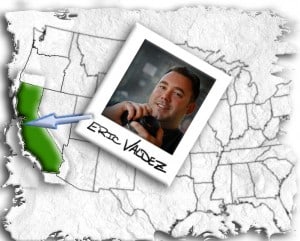
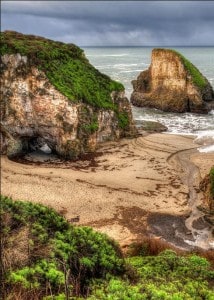
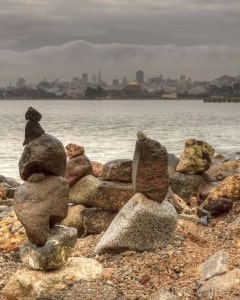
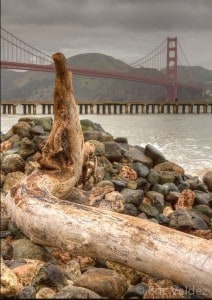
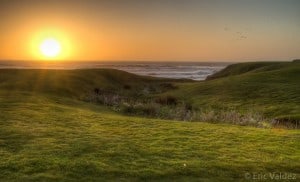








I’m so proud of you. You do awesome work.
Hi,
1st of all, thanks for all the work and good info you provide. Really wonderfull.
I’m about to change my life. I worked 30 yrs as a pro photographer for others. The creative part in me wants to do it’s own thing now. I just sold my house and will fully get involved in landscape photography.
What I would like to ask you is this.
You mention that you push a -1EV and a +1EV out of the RAW files you get.
1. What software program are you using to do this. ( I use Phase One )
2. How do you do this in yr program, and also how do you see or know that it is -1 and +1 stop you push the RAW files.
Hope I’m clear enough, cause english isn’t my native language.
Thanks again and keep on keep’n on ! 🙂
Kindest regards,
Luc.